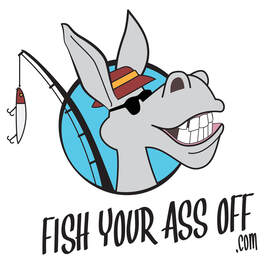
How much drag do you need for shark fishing?
A reel with at least 25 pounds of maximum drag capacity is necessary for sharks over 100 pounds. Smaller sharks will require reels with 15 to 20 pounds of maximum drag pressure.
The key to setting your drag correctly depends upon the conditions. If you want to make it easier on the shark, then you can crank down the drag to tire the shark more quickly to get it caught and released.
If you like a longer fight, then you can loosen the drag a bit but that will make both you and the shark much more exhausted. You may have to spend a few minutes reviving the shark after a long battle. If you don't, then it might not recover and die from its prolonged fight.
I am a FISHING CHARTER CAPTAIN. I have been fishing for sharks, redfish, snook, speckled trout and just about every other inshore species of fish for more than 40 years. Catching blacktip sharks off of the beach is one of my favorite things to do.
In the article below, I will talk about the correct tackle and techniques to catch sharks off of the beach or anywhere else.
Let's get started.
Watch the video below to learn more about the best tackle for shark fishing on the beach.
A reel with at least 25 pounds of maximum drag capacity is necessary for sharks over 100 pounds. Smaller sharks will require reels with 15 to 20 pounds of maximum drag pressure.
The key to setting your drag correctly depends upon the conditions. If you want to make it easier on the shark, then you can crank down the drag to tire the shark more quickly to get it caught and released.
If you like a longer fight, then you can loosen the drag a bit but that will make both you and the shark much more exhausted. You may have to spend a few minutes reviving the shark after a long battle. If you don't, then it might not recover and die from its prolonged fight.
I am a FISHING CHARTER CAPTAIN. I have been fishing for sharks, redfish, snook, speckled trout and just about every other inshore species of fish for more than 40 years. Catching blacktip sharks off of the beach is one of my favorite things to do.
In the article below, I will talk about the correct tackle and techniques to catch sharks off of the beach or anywhere else.
Let's get started.
Watch the video below to learn more about the best tackle for shark fishing on the beach.
How do you properly set your drag for shark fishing?
Setting the drag on a spinning reel is as simple as turning the drag tensioner on top of the reel in a clockwise motion. You can lessen the drag with a counter clockwise motion.
It is the same with a conventional bait casting reel too but it will be a little knob on the side of the reel that you will turn.
Drag is, simply put, the friction created between two washers within the reel. Those washers are pressing against each other to create tension on the rotation of the spool as line is being peeled off of it as the shark pulls against the line.
Drag is necessary to put constant pressure on the shark to tire them out more quickly and to prevent your fishing line, hooks, swivels, lures, fishing rod or whatever is being used to catch the fish from breaking.
When you decide to target sharks you will need a reel that can put at a minimum 25 pounds of pressure on the shark. That is a lot of pressure when you think about it. Not for the shark but for you.
That is the equivalent of tying a 25 pound weight to your fishing line and cranking the drag all the way down until it isn't pulling any line. The bend in the rod helps take some of the tension off of your body but that is a lot of weight to fight against for 30 minutes or an hour with a large shark.
That is how you can test how much drag is set on your reel. Here's an example.
You can tie a 10 pound weight to your line and crank the drag down until it can lift the weight off of the ground. When the weight lifts, then you know that your reel is set with 10 pounds of drag.
I wrote another article on this website all about how to catch a shark. This covers many different species of sharks and the proper tackle, baits and lures to use. You can read that article by clicking right here.
Setting your drag simplified
There are basic rules of thumb created by us fishermen over the years about the proper amount of drag as compared to the pound test of your line. These are simple guidelines that any angler can use for any type of fishing.
The proper amount of drag versus test poundage is:
- Up to 20 pound line requires 20% drag pressure (4 pounds)
- 30 to 50 pound line requires 25% drag pressure (6 to 10 pounds)
- 80 to 120 pound line requires 30% drag pressure (16 to 24 pounds)
This is an oversimplification but it is a useful guide to help you set your drag so you don't lose any trophy sharks the next time that you decide to target them.
My shark rod is full of 50 pound braided line. Here is the math to figure out how much drag I should use for shark fishing. 50 X 25% = 12.5. So the optimal amount of drag pressure that I should use based on my 50 pound test is 12 or 13 pounds.
You will need a reel with more drag when you are fishing for sharks around structures. When I say structures, I am talking about piers, bridges, docks, inlet boulders, reefs, wrecks......
Sharks are great at running towards underwater structure that can cut your line on the sharp oysters, barnacles and other edges that will snap fray your line your line.
When know that you are going to target sharks near a structure you should upgrade your reels. You will need a reel with 30 to 50 pounds of drag when you are shark fishing around structures of some sort for big sharks.
WANT TO CATCH A SHARK? BOOK YOUR FISHING CHARTER TODAY!
How much does a good shark fishing rod and reel combo cost?
You can expect to pay $250 for a high quality shark reel with enough drag to stop you from getting spooled every time a really big shark takes your bait.
A nice stout rod will cost at least $150. Now you will need at least 300 yards of braided line in the 50 to 100 pound test range. That can cost you $50 to $100 depending upon the brand that you buy.
When you add it all up you are looking at $500 or $600 after you buy your 5/0 to 10/0 circle hooks; wire leaders, weights, swivels........ The barrier to entry into the shark fishing world is more expensive than say bass fishing or redfish fishing but you are targeting the apex predators of the sea. What did you expect?
That requires some heavy duty fishing gear and there are more safety considerations to think about too. A bass won't bite your arm off if you get too close. A redfish can't hit you with its tail and break your leg.
PRO TIP: Don't fish for sharks when there is high surf. Handling a shark is dangerous enough without trying to land one on the beach with waves crashing into you. If you get knocked too close to the shark's mouth, then you might lose an appendage.
Tips for Releasing a Shark
How to properly land and release a shark is very important. I like to get the shark back in the water within 2 minutes of pulling it out of the water. This is especially true with ram breathing sharks like blacktips.
Blacktip sharks have to swim forward to breathe. They need the oxygenated water to be forced over their gills or they will die. Other sharks can handle being out of the water a little longer.
The best way is to pull them backwards by the tail BUT be careful. Sharks do not have any bones in their bodies. They have cartilage and can bend backwards and bite you if you are not careful.
Here are the steps to land a shark on the beach:
- Pull the shark out of the water.
- Cut the hook; Pull the hook; or Cut the leader.
- Take your photos.
- Pull the shark back into the water.
- Smile and watch it swim away.
Conclusion:
It is a good idea to understand how much drag you will need to handle different sizes of sharks when you are fishing for them. It is also a good idea to have more drag capacity than you need. It's like the old saying goes, "It's better to have it and not need it, than need it and not have it."
Go and get yourself a nice stout rod and a 6500 series reel and fill it with 80 pound braided line and you are ready to do some shark fishing. There will be plenty of drag in a 6500 series reel to catch some good sized sharks.
If you plan on going after the really big ones, then you might need something huge like an 8500 series reel. Only you know what sized sharks you will want to target.
What you don't want to happen is fighting a shark so long that it can't be revived once you release it. Make sure that you have enough drag to get the shark landed in a reasonable amount of time.
I hope that you enjoyed this article and I hope that you catch a nice shark the next time that you go fishing.
Do you want more helpful articles like this to be emailed to you every week? If so, sign up for our email list below to get more inshore fishing related articles sent to you once a week.
